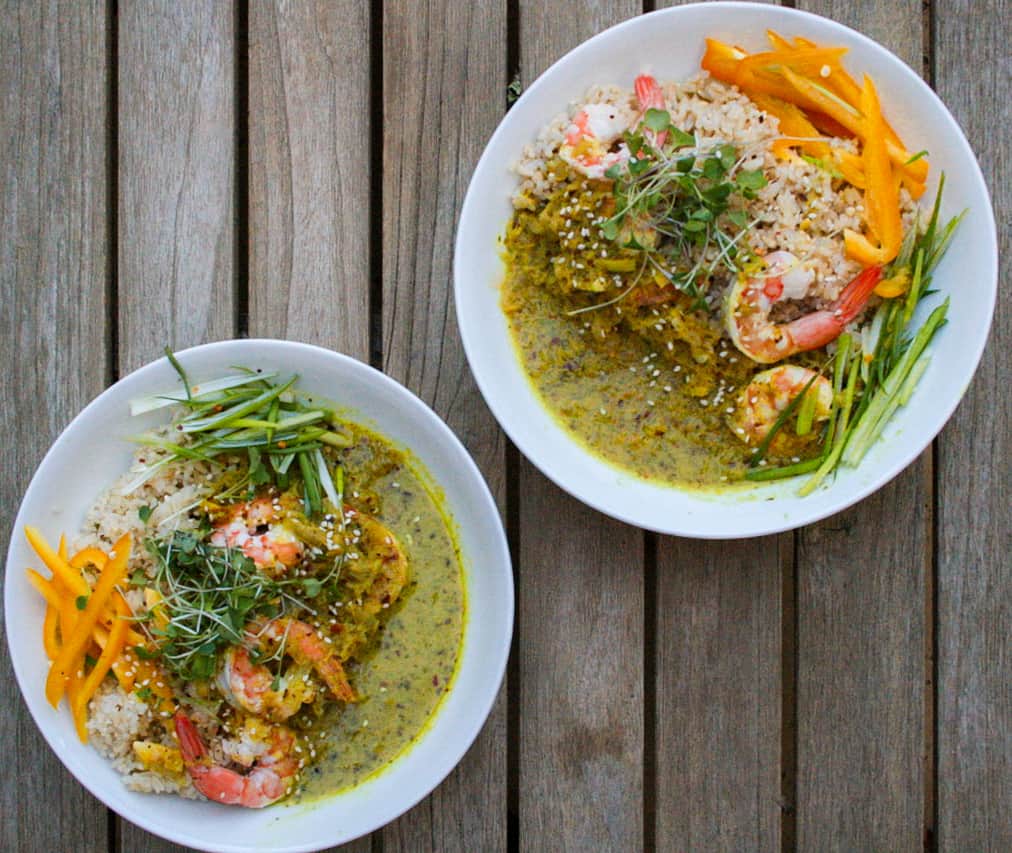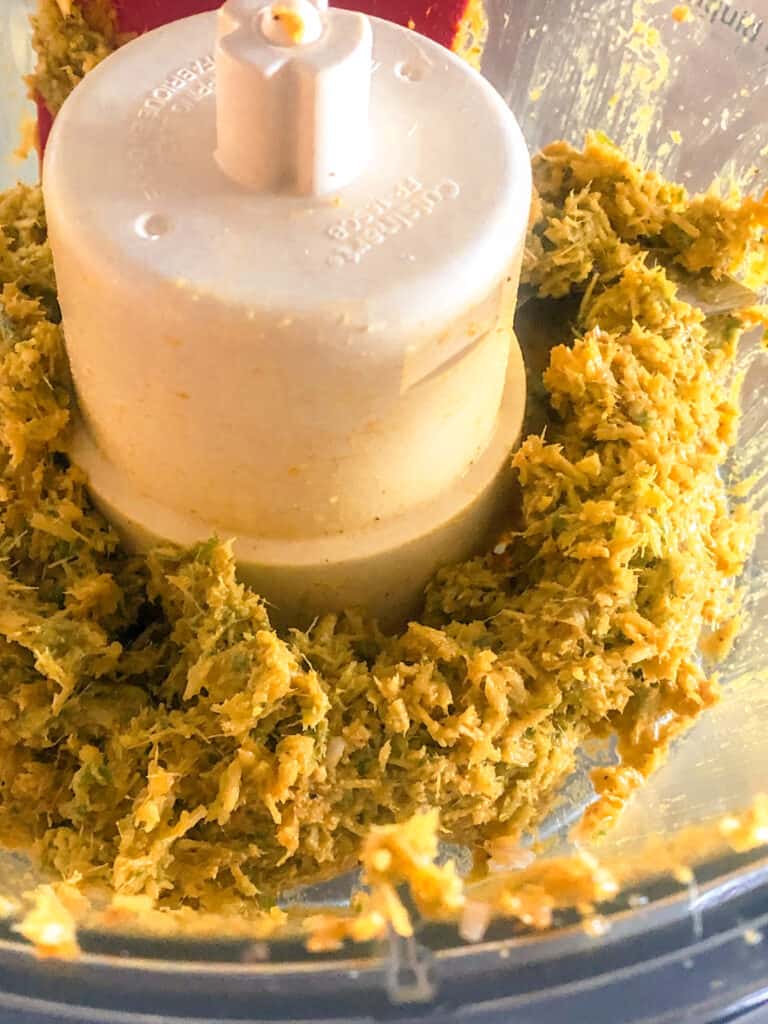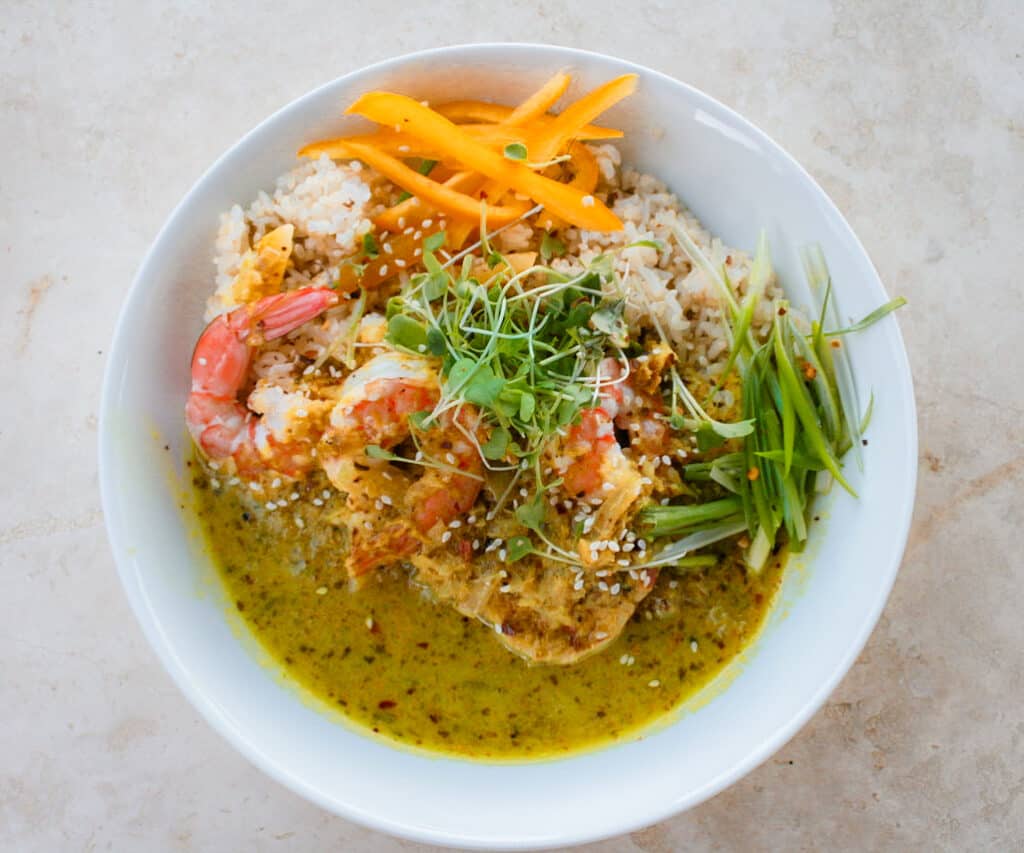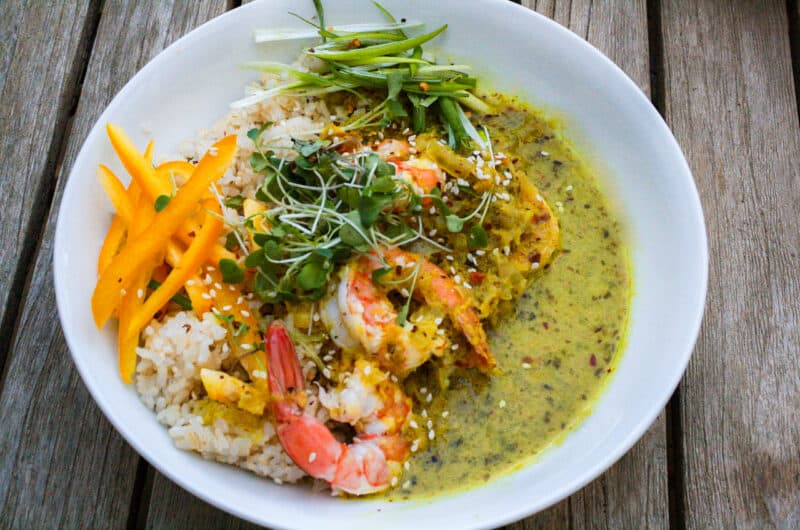Stay cozy with a steaming bowl of my Basil Lemongrass Coconut Curry.
Long, cold nights call for a hearty and nutritious dinner, and this basil lemongrass coconut curry fits that bill! This curry dish is full of flavor from the fresh lemongrass, basil from my garden, and a touch of heat from the red pepper flakes and turmeric.

This dish is so easy to put together, especially since you can make the curry paste up to 3 days ahead of time, and longer if you freeze it! For the strongest flavor, I prefer to blend everything into a paste in a food processor or blender. But if you do not have one, I have also made the dish by finely dicing everything up and letting it simmer in coconut milk for 30-40 minutes. This will yield a much lighter flavor, but is still delicious!
Basil Lemon Grass Curry Paste

This dish starts out by making a Basil Lemongrass Curry Paste which is so delicious! This curry paste is by no means limited to coconut curry. I have used this as a marinade for cod and chicken before and it turned out incredible! To make this paste, add the roughly chopped lemongrass, basil, shallot, garlic, sugar and spices to a food processor and let it blend for a while. You will need to continuously scrape down the sides. Keep blending until a paste is formed, and add a tablespoon of water if necessary to help everything stick together. This curry paste will keep for 3 days sealed in the refrigerator, or for up to 1 month frozen.
How to cut lemongrass
Lemongrass is not super common and so you may be confused on how to use it for this dish. First things first, lemongrass looks like a long and hard green onion, and it is much less intimidating than it appears. Below are the steps of how I cut the lemongrass to use for the paste.
- Trim the bottom root (about 1-2 inches.) This part is tough and flavorless and you would not want to eat it.
- Cut the dark green tops of the stalk off (about 5-6 inches.) This part is chewy and largely flavorless.
- Remove the tough outer layer. This will peel right off once you cut the tops and bottoms off.
- Cut remaining lemongrass into 3rds. Because we will be blending this into a paste, it is not necessary to spend time chopping it finely. Cutting it into 3rds will be sufficient, contingent it will fit into your food processor.
For more in-depth directions and photos, check out The Spruce Eat’s Guide.

Basil Lemongrass Curry Cooking Tips
- Some important things to keep in mind when making this dish is that you will need to add more salt and red pepper flakes than you think. When you cook with a dairy or dairy substitute like coconut milk, the cream dilutes a lot of the flavor. In this recipe, which uses 2 whole cans of coconut milk, salt is your friend! Don’t be afraid to season liberally.
- Because of the aforementioned dilution caused by the cream, I suggest using reduced fat or lite coconut milk. Using a full fat or adding coconut cream will reduce the flavor significantly. This is fine if you are looking for a coconut-heavy flavor. But, because the basil lemongrass curry paste is so delicious, I would not recommend.
- I like to give my curries a bit of texture, so dice an additional 1&½ shallots to sauté before I add the coconut milk. This is optional, but I think it gives the curry more depth
Cooking Substitutions
- Any protein can be used in this dish, or none at all! My go to is always shrimp because it cooks/defrosts the fastest. But feel free to use chicken, tofu, lentils, etc! Just plan ahead to everything can be cooked at the same time. Especially if using chicken because you would need to cook it at least 90% through before adding it to the curry to finish cooking.
- Any vegetables can be used here. In my pictures, I have bell peppers, green onion, and sprouts. But I have also enjoyed this dish with broccoli, bok choy, snap peas, the list goes on!
Looking for more seafood recipes? Check out the following!
Mediterranean Salmon with Lemon Caper Chutney
Blistered Tomato Salmon with Harissa Yogurt
25 Minute Spicy Salmon with Coconut Rice
Basil Lemongrass Coconut Curry
Course: DinnerCuisine: ThaiDifficulty: Medium4
servings25
minutes20
minutesIngredients
4 Stalks Lemon Grass
½ Cup Basil
2 Shallots, Divided
1 (1 inch) piece of ginger, roughly chopped
3 Garlic Cloves
2 Tsp Brown Sugar
½ Tsp Turmeric
½ Tsp Ground Coriander
½ Tsp Cumin
½ Tsp Salt
¼ Tsp Pepper
1 Tsp Red Pepper Flakes
2 (13oz) Cans Reduced Fat Coconut Milk
1 Tbs Coconut Oil
4-5 Cups Cooked Rice
1 Lb Shrimp, Chicken, Tofu (optional)
- Any Vegetable Topping
Bell Pepper
Green Onion
Broccoli
Snap Peas
Directions
- Add chopped lemongrass, basil, 1 shallot, garlic, ginger, ground coriander, cumin, turmeric, salt, pepper, red pepper flakes, and brown sugar to a food processor. Blend until a paste forms. You will need to continuously scrap down the sides of the bowl. Add 1 Tbs of water if needed to help everything combine together.
- Dice the remaining shallots and set aside.
- Over Medium heat, melt the coconut oil in a large pan (big enough to hold 2 cans of coconut milk). Once the oil is hot and melted, add the basil lemongrass curry paste in. Let the curry paste bloom for 1 minute. Then add in the remaining chopped shallots and sauté until softened. Roughly 2 minutes. I do this because I like to give my curries some texture, but if you prefer it to be smoother you can omit the shallot.
- Pour in both cans of coconut milk and stir until combined. Cover and let curry reduce over medium heat for 20 minutes. Stir every so often and taste to see how much salt and red pepper flakes need to be added.
- While the curry simmers, prepare any and all of the proteins and vegetables you will be adding. I added shrimp, bell peppers, green onion, and sprouts.
- Once the coconut curry has reduced and become thicker, begin assembling your dish. Pour the curry over a bed of rice, and top with any proteins and vegetables. Serve and enjoy!
Notes
- Plan ahead if using a protein variation. Shrimp cooks quickly and so can cooked in the curry. Alternatively, you can pan fry it, then add it on top like I did. If you are using chicken, you will need to cook it out of the curry first, then add it in after.
- I have tried cooking my vegetables various ways, and I prefer steaming them first, and then adding them last as I assemble my bowl. In my experience, cooking the vegetables in the curry, leads them to soak up all the sauce and doesn't leave you much to spoon over your rice.




I NEED THIS. Yum!